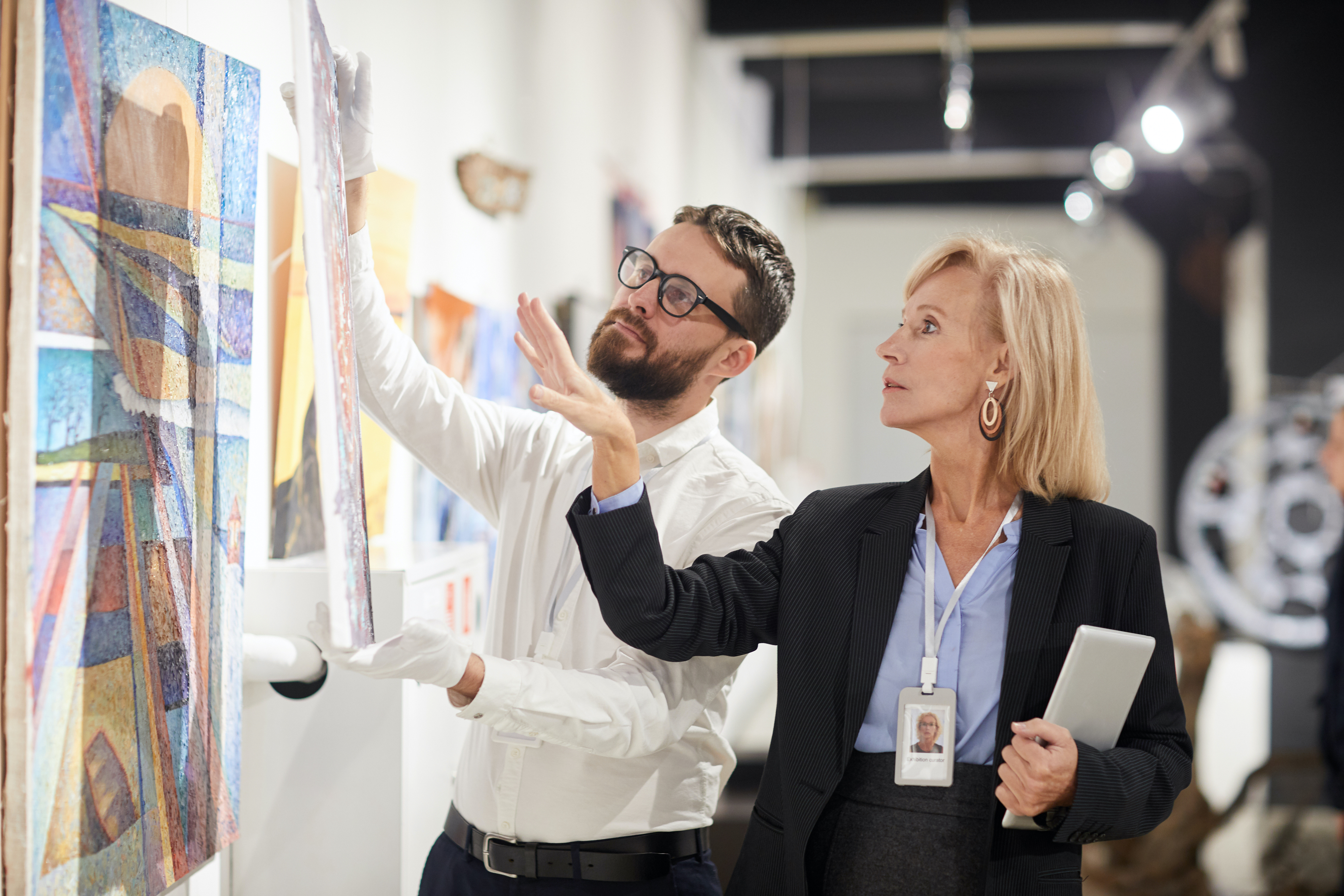By design, art museums are meant to showcase beautiful objects and their creators, offer insight into history, and elicit wonder and awe. A recent study by Penn’s Katherine Cotter and James Pawelski revealed that people who visit art museums experience a range of benefits from doing so.
But when it comes to visitor well-being, how do art museum professionals think their institutions are faring?
To find out, Cotter and Pawelski recruited and surveyed more than 200 curators, educators, researchers, security guards, exhibit designers, and others working at art museums. These professionals choose which art gets displayed, lead tours and workshops, conduct marketing and community outreach, work at the welcome desk, take tickets, and more. “We’re not art museum professionals ourselves,” Pawelski says, “so we wanted to make sure that we were really closely attuned to their perspectives, needs, and recommendations.”
In the journal Empirical Studies of the Arts, Cotter and Pawelski share that broadly speaking, these professionals want to see art museums place greater emphasis on human flourishing and to see their institutional mission shift in that direction, but also feel their institutions are ill-equipped to make that happen.
“When we asked these professionals how they think they’re doing versus how they should be doing, the biggest gap was related to well-being,” says Cotter, the lead paper author. “Some of the other gaps related to creating a space for community engagement and social interaction, where people can challenge their worldviews.”
This work is part of the Humanities and Human Flourishing Project, situated in Penn’s Positive Psychology Center. Since 2014, “we’ve been focused on establishing the Positive Humanities as a robust field of interdisciplinary research and practice; we are working collaboratively to understand, assess, and advance the well-being effects of engagement in the arts and humanities,” says Pawelski. “One domain we’re developing is in regard to visual art—in particular, in the context of museums.”
Under that umbrella came findings the team published on the subject in December 2021, a literature review led by Cotter showing the mood-boosting effects of visiting art museums. From there, she proposed the idea of surveying people who work in these places, a first-of-its-kind approach to get inside the heads of these experts.
“The project had two primary aims,” Cotter says. “One was to understand how art museums conceive of well-being in their space, especially relative to other aims like collecting and displaying art, researching art, preserving art, providing educational opportunities, and the like. The second was to see which factors of the visit itself they felt would most impact well-being. So, what can you do in the museum or how can you engage in the art that will be conducive to well-being and flourishing?”
The survey focused on well-being and ill-being outcomes. Many of the 208 participants have worked in museum settings for 10 years or more, and they ranged in age from 21 to 79, with a median age of 40. More than three-quarters were female.
The participants first rated the importance of a set of art museum functions, then for 16 well-being outcomes—for example, autonomy or self-esteem—evaluated how likely visiting an art museum would improve each, even temporarily. They also rated how important they felt it was for an art museum to prioritize such components, and how able art museums are to do so.
On the ill-being side, participants rated 16 components like mental illness, stress, negative emotion, and anxiety. Here, they also determined how likely it was that visiting an art museum would reduce these negative feelings, even temporarily, as well as whether museums should prioritize this and whether they had the tools to make it happen.
According to the survey, art museum professionals tend to see their world in two buckets: one that’s art-oriented, another that’s community-oriented. “People felt they could improve a little in aspects they thought they were doing well, like researching and displaying art,” Cotter says. “But often they wanted to focus less on the name-date-place stuff, on the art-history-as-primary-mission stuff, and more on what they can do to be situated in and benefit the community.”
Cotter and Pawelski say they believe these findings indicate a larger trend. “There’s a real ongoing shift as art museums consider what their role is in the world and a new openness and dedication to well-being,” Pawelski says. Having collected their data in the spring and early summer of 2021, they surmise the pandemic played some role in this thinking, though that’s hard to parse specifically. In the future, the researchers plan to develop and test resources that art museums can then implement.
“We want to get beyond just thinking of art museums as places where we can mitigate against mental illness or physical illness or isolation or loneliness or depression,” Pawelski says. “As important as those outcomes are, we also want to think about the ways that art museums can foster positive elements of human flourishing like resilience, empathy, growth, open-mindedness, awe, grit, fairness, deep connections with others, and community cohesion.”
Katherine Cotter is associate director of research with the Humanities and Human Flourishing Project in the Positive Psychology Center in the School of Arts & Sciences at the University of Pennsylvania.
James Pawelski is a professor of practice and director of education in the Positive Psychology Center in the School of Arts & Sciences. He also directs the Humanities and Human Flourishing Project, which investigates connections between engagement in the arts and humanities and human flourishing.
This work was supported by the Chris and Sasha Heinz Family Foundation, Templeton Religion Trust, and National Endowment for the Arts.









